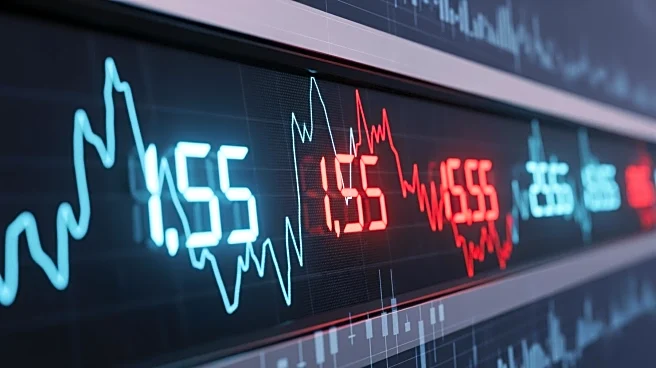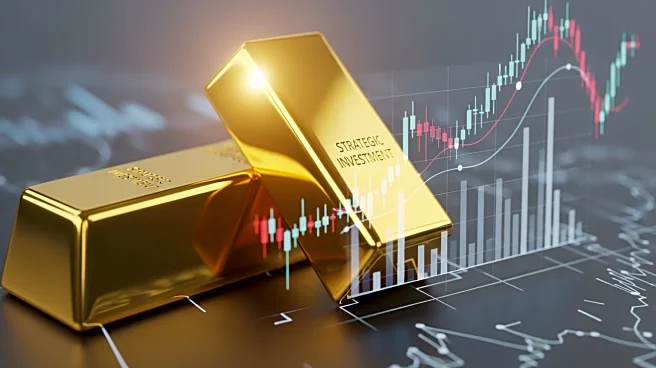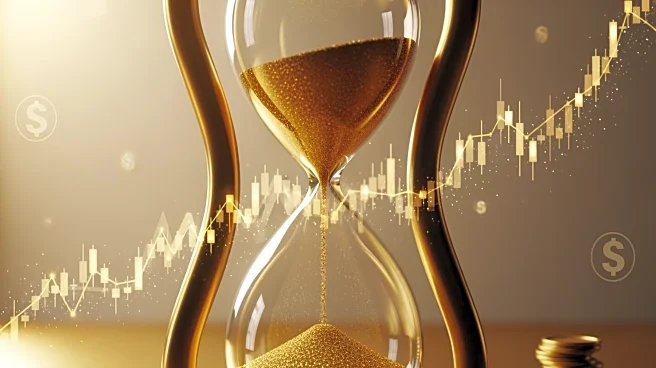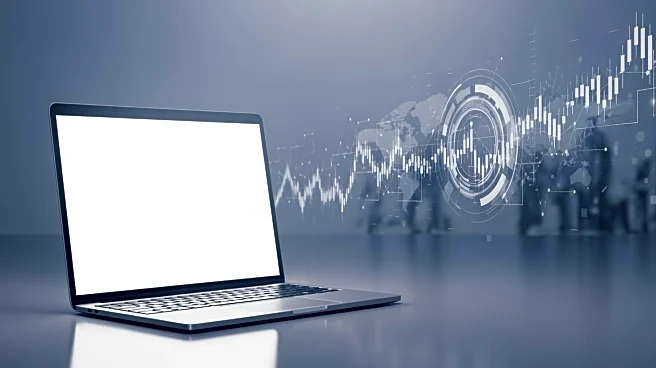What's Happening?
The copper-gold ratio, a key indicator of investor sentiment regarding global economic growth, has recently reached a multi-decade low. This ratio, which compares the price of copper to gold, traditionally
signals economic conditions, with copper demand rising during economic booms and gold serving as a safe haven during times of stress. Despite the decline in the ratio, global growth remains resilient, particularly in the United States, where the artificial intelligence boom has supported investment and stock market highs. The copper market is influenced by electrification demands, including electric vehicles and renewable energy, while gold prices have surged due to geopolitical risks and currency concerns.
Why It's Important?
The shift in the copper-gold ratio highlights significant changes in global economic dynamics. Copper's demand is increasingly driven by electrification, suggesting long-term growth potential, while gold's behavior resembles equity due to speculative flows. This reflects a transition towards an AI-powered, electrified economy and geopolitical fragmentation, with more siloed blocs reassessing U.S. financial dominance. The ratio's evolution indicates a complex narrative of capital allocation between economic future and geopolitical present, impacting investment strategies and market behavior.
What's Next?
The copper-gold ratio's current state suggests ongoing shifts in market dynamics. As electrification continues to drive copper demand, and geopolitical tensions influence gold prices, investors may need to reassess traditional indicators of economic health. The ratio's complexity could lead to new investment strategies focusing on long-term structural growth in copper and speculative opportunities in gold. Stakeholders, including policymakers and investors, will likely monitor these trends closely to navigate the evolving economic landscape.
Beyond the Headlines
The copper-gold ratio's transformation underscores broader implications for global economic and geopolitical stability. The rise of retail investment and momentum-based trading amplifies market movements, challenging traditional risk assessment models. This shift may prompt ethical considerations regarding speculative investments and their impact on market volatility. Additionally, the ratio's narrative reflects deeper cultural and financial shifts, as nations and investors adapt to changing power dynamics and technological advancements.











